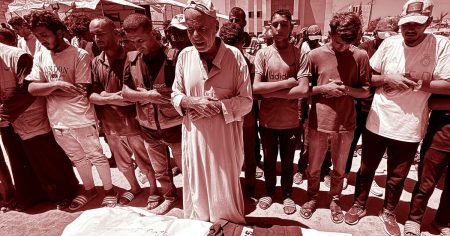John Allen Chau, a 26-year-old American missionary, met a tragic end on North Sentinel Island, shot by arrows from the isolated Sentinelese tribe. His story, widely reported six years ago, sparked controversy and condemnation, with many labeling him a reckless fool who deserved his fate. Images of agitated tribesmen brandishing spears against the encroaching outsider remain imprinted in the public consciousness. However, poet Johanna Larsson, in her debut collection ”Bokstavstro” (Letter Faith), delves into the heart of this encounter, seeking not to judge, but to understand the complex interplay of faith, language, and the human desire for connection that led to Chau’s demise.
Larsson’s poetry orbits around the fateful meeting between Chau and the Sentinelese, exploring the fragility and inadequacy of language, particularly the ”letter faith” that underpinned Chau’s mission. She questions the very foundation of the Word, acknowledging the multitude of interpretations and translations that shape religious understanding. From the original Koine Greek of the New Testament, a language unknown to Christ himself, to the countless variations across languages and time, Larsson highlights the inherent limitations of relying solely on literal interpretations in conveying complex spiritual concepts. The very mission that led Chau to his death, the command to spread salvation to every corner of the earth, she reveals, originated as a simple suggestion for travelers to mentor those they encountered on their journeys. This stark contrast underscores the chasm between original intent and the rigid dogma that can sometimes drive religious zeal.
The challenge of finding the right words, even for seemingly simple concepts, forms a central theme. Larsson uses the example of explaining olives to someone unfamiliar with the fruit, highlighting the translator’s dilemma: use the unfamiliar word directly, find a culturally relevant equivalent, or opt for a more general, albeit less precise, term. Each option represents a compromise, a loss in translation that underscores the elusive nature of true understanding. In a world where even basic concepts can be lost in the fog of language, how can the complexities of faith and belief be accurately conveyed? This question lies at the heart of Larsson’s exploration of Chau’s ill-fated attempt to communicate his beliefs.
Moving beyond the limitations of biblical language, Larsson seeks common ground in universally understood concepts. She lists terms found across all languages – rain, lake, fruit, seed, bath, tooth, road, hand – suggesting that these shared experiences point to a deeper, shared understanding of the world. This shared reality, she proposes, extends to the realm of the sacred, manifesting in experiences like the awe of a storm, the chilling stillness of an eclipse, and the primal bond between mother and child. These universal touchstones, Larsson argues, provide a more accessible pathway to understanding the sacred than rigid adherence to dogma and scripture.
However, Chau was neither a poet nor a teacher in the traditional sense. His approach lacked the sensitivity and cultural awareness necessary for effective communication. Rather than engaging with the Sentinelese on their terms, he confronted them with a declaration of love and faith in a language they did not understand, delivered with an aggressive confidence that likely fueled their hostility. His actions suggest a naivete and a romanticized view of his mission, perhaps driven by a youthful thirst for adventure masked as religious zeal. His friends’ accounts, recalling his description of North Sentinel Island as ”Satan’s last stronghold,” further reinforce this impression of a man driven by a simplistic, almost cartoonish view of good and evil.
The tragedy of Chau’s death highlights the inherent danger of missionary work, both religious and political, when it fails to prioritize genuine understanding and respect for the other. The Sentinelese, known for their hostility towards outsiders, had previously accepted gifts of coconuts from Indian anthropologists, demonstrating a capacity for interaction when approached with respect and understanding. This detail underscores the missed opportunity for connection. Had Chau taken the time to learn about their culture, their needs, their fears, perhaps the outcome would have been different. Instead, his forceful approach, fueled by a rigid belief system and a disregard for their customs, tragically sealed his fate. Larsson’s poetry ultimately serves as a meditation on the complexities of communication, faith, and the human need for connection, offering a poignant reflection on the tragic consequences that can result when those connections are sought through the lens of dogma and disregard for the other. The question of who John Allen Chau truly was, and what motivated him, remains unanswered, lost in the chasm between languages, cultures, and beliefs.














